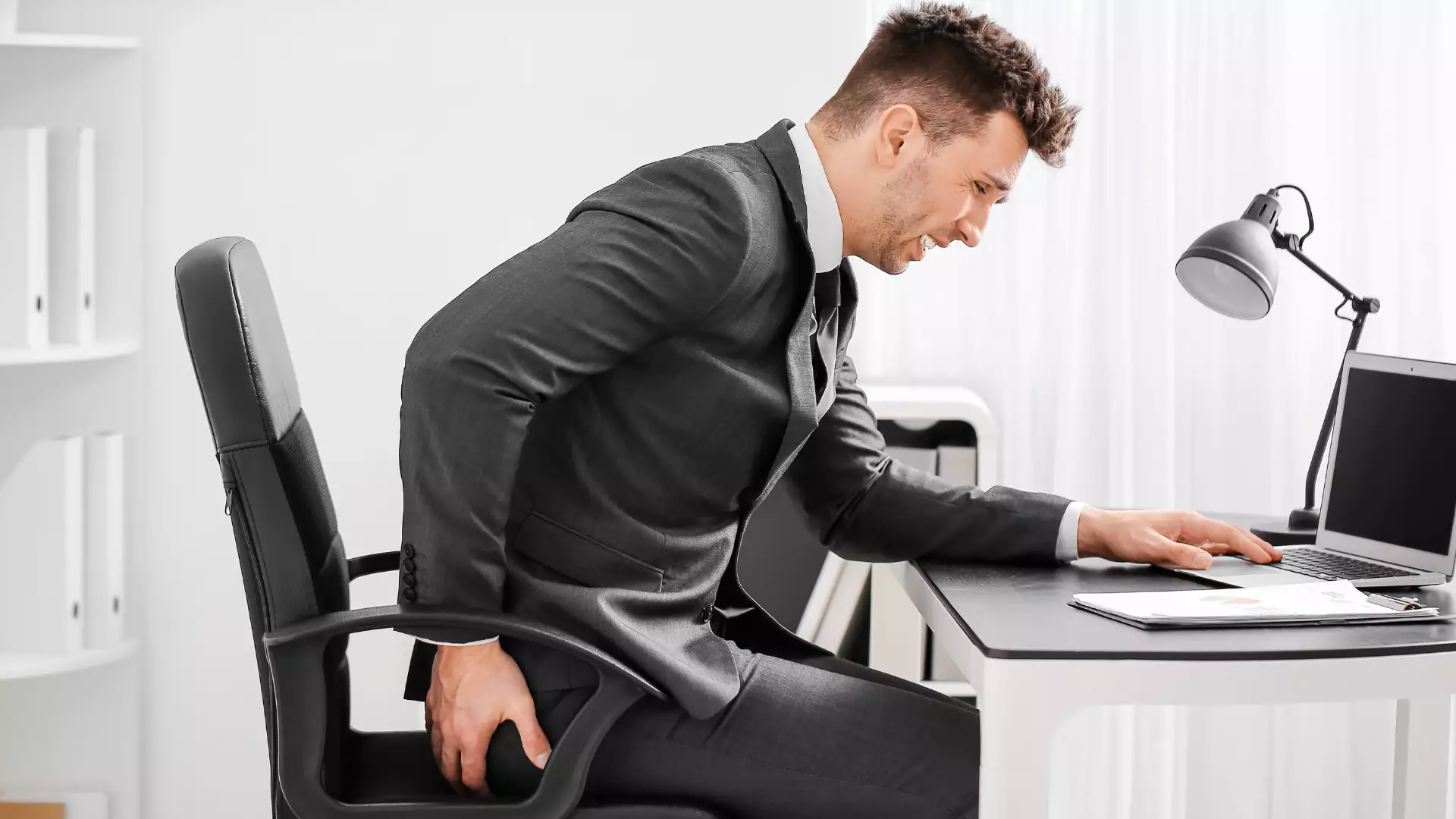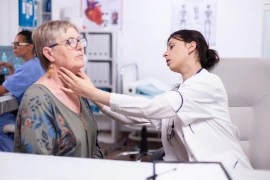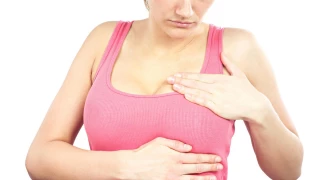
What is Hemorrhoid? Symptoms and Treatment Methods
- What is Hemorrhoid? Symptoms and Treatment Methods
- What Are the Types of Hemorrhoids?
- What Are the Symptoms of Hemorrhoids?
- Symptoms of internal hemorrhoids
- Symptoms of external hemorrhoids
- What are the Causes and Risk Factors of Hemorrhoids?
- What are Hemorrhoid Complications?
- How Is Hemorrhoid Diagnosed?
- How to Treat Hemorrhoids?
- Hemorrhoid treatment at home
- External Hemorrhoids Treatment
- Internal Hemorrhoids Treatment
- Surgical treatment and hemorrhoid removal operations
- How to Prevent Hemorrhoids?
Hemorrhoids are prominent and swollen veins in the anus and lower part of the rectum. E.g.; As in pregnancy, it occurs as a result of exertion during bowel work or severe pressure on these vessels. Hemorrhoids is a very common disease. By age 50, about half of adults experience itching, discomfort and bleeding, which can be signs of illness. In most people, an improvement in hemorrhoid symptoms occurs after using home remedies to treat hemorrhoids and changing their lifestyle.
What Are the Types of Hemorrhoids?
There are four types of hemorrhoids and they are:
1. External hemorrhoids: Located in the anus, directly on the surface where bowel movements come out. They are not always visible, but sometimes appear as lumps on the surface of the anus. External hemorrhoids are not usually a serious medical problem.
2. Internal hemorrhoids: usually located in the rectum. It is not always visible as it is too deep to be visible from the anus. Internal hemorrhoids are usually not dangerous and tend to go away on their own.
3. Hemorrhoid prolapse: Prolapse hemorrhoids occur when the internal hemorrhoid swells and sticks to the anus. A drooping hemorrhoid looks like red and swollen bumps on the outside of the anus.
4. Thrombosed hemorrhoids: That is, infected with thrombosis. A thrombosed hemorrhoid contains a blood clot (thrombosis) within the hemorrhoidal tissue. It may appear as lumps or swelling around the anus. Blood clots can form in both internal and external hemorrhoids
What Are the Symptoms of Hemorrhoids?
In the case of hemorrhoids, the following symptoms may appear:
- Bleeding during bowel function is painless. Sometimes some bright red blood can be seen on the toilet paper or on the toilet bowl.
- Itching or irritation in the anus area
- Pain or discomfort
- Visible and protruding hemorrhoids outside the anus
- Lump around the anus
- A painful or hypersensitive lump near the anus
- Fecal leakage
The symptoms of hemorrhoids differ due to the different location of the hemorrhoid:
Symptoms of internal hemorrhoids
Symptoms of hemorrhoids located inside the rectum. It cannot be seen or felt, it is often irritating. However, straining or burning when passing stool can damage the delicate outer surface of the hemorrhoid, causing bleeding. Sometimes, especially with exertion, an internal hemorrhoid can burst, i.e., protrude out of the anus. These are called 'protruding hemorrhoids' or 'drooping hemorrhoids' and can cause pain and itching (irritation).
Symptoms of external hemorrhoids
External hemorrhoids are located under the skin, around the anus. The main symptoms of hemorrhoids may include irritation and itching or bleeding. Sometimes blood can tighten and pull the external hemorrhoid inward and form a thrombus (a blood clot) that causes severe pain, swelling, and inflammation.
What are the Causes and Risk Factors of Hemorrhoids?
Usually, the veins around the anus tend to shrink as a result of pressure and may swell. Swollen veins can occur due to severe pressure in the lower rectum. This extreme stress can be caused by one of the following factors:
- Effort during bowel work
- Prolonged and excessive sitting on the toilet
- Chronic diarrhea or chronic constipation
- Overweight
- Pregnancy
- Having anal sex
In addition to the symptoms mentioned above, one of the causes of hemorrhoids may be due to a genetic factor. The risk of developing hemorrhoids increases with age because the supporting tissues of the rectal veins and anal veins weaken and contract with age.
What are Hemorrhoid Complications?
Complications are rare. However, it may include:
- Anemia: Chronic blood loss as a result of illness can cause anemia.
- Strangulated hemorrhoids: This occurs when blood flow to them stops and they suffocate. This can lead to severe pain and eventual death of tissue (necrosis).
How Is Hemorrhoid Diagnosed?
A proctologist can diagnose external hemorrhoids simply by looking. To diagnose internal hemorrhoids, the doctor must insert his finger, covered with a rubber glove, into the rectum. Because internal hemorrhoids are often very soft and the doctor cannot detect their presence by only examining the rectum, it is possible for the doctor to examine the lower part of the intestine and rectum with an anoscope, proctoscope, or sigmoidoscope. These endoscopes are soft, shiny tubes that allow the doctor to look at the anus and rectum.
Sometimes, for diagnostic purposes, more comprehensive and detailed examinations of all parts of the intestine using a colonoscope may be required. The need for a colonoscopy arises in the following situations:
- Have signs and symptoms of another digestive disease
- Have a high risk of developing cancer of the large intestine (colon cancer)
- The person being examined is over the age of 50 and has not had a colonoscopy examination in the last ten years.
How to Treat Hemorrhoids?
Fortunately, there are many effective ways to treat the disease. Treatment of hemorrhoids is divided into several types, such as:
1. Medications:
If your hemorrhoids are only causing discomfort, your doctor may prescribe some over-the-counter medications such as creams, ointments, or suppositories. These medications contain substances such as hydrocortisone and lidocaine that work to temporarily relieve pain and itching.
Warning: Do not use steroid-containing over-the-counter cream for more than a week unless advised by your doctor, as this can cause thinning of the skin in the area.
Excision: If your external hemorrhoid is causing painful clots, your doctor will likely remove the clot by making an incision to drain the clot, known as a thrombectomy. This operation is very effective if performed within 72 hours following the formation of thrombus in the area.
Simple procedures: If your hemorrhoids are accompanied by bleeding and pain, your doctor may suggest you use one of the minimally invasive procedures and can be performed in the doctor's office without the need for anesthesia. These options include:
Treating hemorrhoids with a rubber band: The doctor places a band or two around the base of the internal hemorrhoid to prevent blood flow, so that the blood falls out in just a week. This treatment may cause bleeding that may begin 2 to 4 days after surgery, but is rarely severe.
Sclerotherapy: During this treatment mechanism, the doctor injects a chemical solution to shrink the hemorrhoid tissue. While this injection does not cause any pain, it may be less effective than a rubber band.
Coagulation of hemorrhoids: Coagulation techniques rely on the use of laser, heat, or infrared light, which causes the internal hemorrhoid to harden and then fade. This procedure is associated with some side effects and the chance of the hemorrhoids reappearing is greater than treatment with a rubber band.
Surgical operations: If previous treatments have not worked and the hemorrhoids are large, the doctor may recommend that you use existing surgeries, which include:
Hemorrhoidectomy: In this surgery, the surgeon removes the excess tissue that is causing the bleeding. The surgeon may use sedation along with local anesthesia. This is the most effective procedure that helps to cure hemorrhoids completely. Side effects of this treatment include:
- Difficulty emptying the bladder completely
- Urinary tract infections
- Shortening of hemorrhoids: This operation aims to block the blood flow to the hemorrhoid tissue and is used only in the case of internal hemorrhoids. The pain associated with this surgery is less than the previous one and unfortunately there is a greater chance of hemorrhoids developing again.
Side effects associated with this process include:
- Bleeding
- Pain and urinary retention
Hemorrhoid treatment at home
You can treat hemorrhoids that are not associated with great pain with home remedies, and these procedures include:
- Focus on eating fiber-rich foods: Eat more fruits, vegetables, and whole grains to soften stools.
- Warm baths: Take warm baths for 10 to 15 minutes three to four times a day.
- Keep the anal area clean: Make sure you always clean the anal area and its surroundings with warm water and don't forget to dry it thoroughly.
- Do not use dry toilet paper: Replace with wet toilet paper that does not contain alcohol or perfume.
- Place a cold source: What we mean is the area where the hemorrhoid appears to reduce swelling.
External Hemorrhoids Treatment
In general, there is no need or recommendation for treatment with invasive or surgical procedures for patients with external hemorrhoids, except in the case of thrombosis. In patients who are usually examined within 72 hours of thrombosis occurring, blood is usually drawn by a simple surgical procedure such as decompression to significantly reduce pain. On the other hand, some doctors who are researchers in the field believe that an operation to remove these hemorrhoids is preferred to prevent recurrent thrombosis.
Internal Hemorrhoids Treatment
As mentioned earlier, hemorrhoids are treated independently depending on their position and grade of hemorrhoids.
Surgical treatment and hemorrhoid removal operations
If other measures are not successful in treating the hemorrhoids and do not produce the desired results, or if the hemorrhoids are large, the doctor will likely recommend surgery to treat it. Some surgeries can be performed in an outpatient setting, while others require an overnight stay in the hospital:
- Closed hemorrhoidectomy
- Open hemorrhoidectomy
- Stapling hemorrhoidectomy
- Ultrasound guided hemorrhoidal artery ligation (Doppler)
- Lateral internal sphincterotomy
How to Prevent Hemorrhoids?
The best way to prevent stool is to keep the stool loose so they can pass stool easily. To prevent or alleviate the symptoms of hemorrhoids, it is preferable to take the following measures:
- Eat foods rich in dietary fiber
- Drink more fluids
- Consider eating fiber as a food additive
- Avoid trying too hard
- Going to the toilet as soon as you feel the urge (unbridled)
- To do sport
- Avoid standing and sitting for long periods of time.





